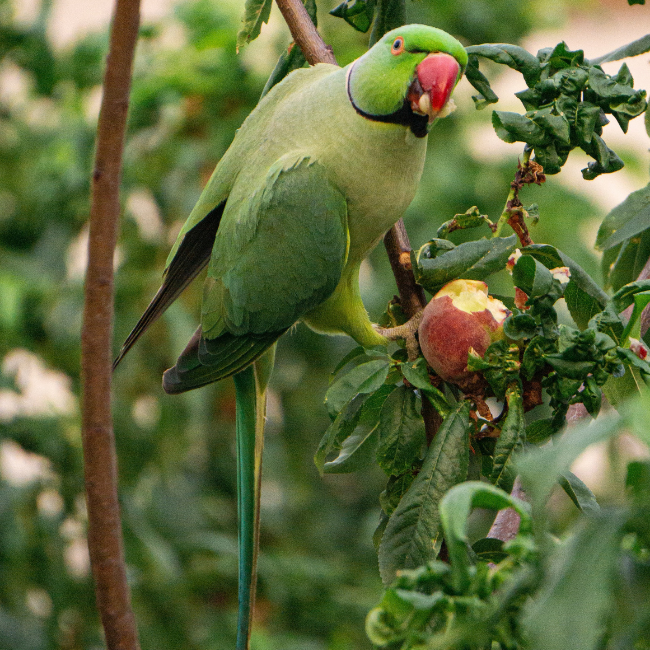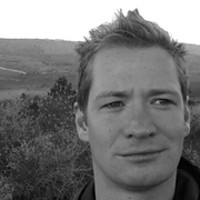
Dr. Diederik Strubbe
Terrestrial Ecology Unit
Department of Biology
Ghent University
K.L. Ledeganckstraat 35
9000 Gent Belgium
Phone: +32 (0)9 264 52 24
E-mail: diederik.strubbe@ugent.be
Personal website: http://www.diederikstrubbe.com
Research
My research addresses the patterns and processes behind the distribution of species and their characteristics in space and time. I research how species (fail to) adapt to global change and use that information to inform policy and conservation decision-making.
By studying how fundamental and realized niche dynamics affect the potential geographic distribution of species, and when & how integrating information on population processes, landscape connectivity, and dispersal capacities allows for better prediction of responses to scenarios of global change, my research addresses the patterns and processes behind the distribution of species and their characteristics in space and time.
A second main research line questions how changes in the quantity, quality and spatial configuration of land use can impact biodiversity.
My overarching research goal is to improve predictions of future ecological change, design effective adaptation strategies for safeguarding biodiversity, and to better manage invasive species.
Major Topics
Niche dynamics during invasion
Species’ climatic niches are often used to estimate species potential geographic distributions, yet forecasts frequently cannot accurately predict the occurrence of invasive species. To learn what underlies such mismatches between predicted and actual invasive species’ distributions, we study what mechanisms and processes influence niche changes between species’ native and invasive ranges.
While most research so far has focused on quantifying species niches using correlative niche models that rely on species contemporary geographical distributions, our research goes a step further and uses ecophysiological, morphological and behavioral information to quantify species’ fundamental thermal niches.
By leveraging ecophysiological rules and scaling functions coupled with direct empirical measurements of species’ metabolism, we identify which climates are fundamentally tolerable by species, and which functional traits allow species to invade climates that differ from the ones they experience across the native range.
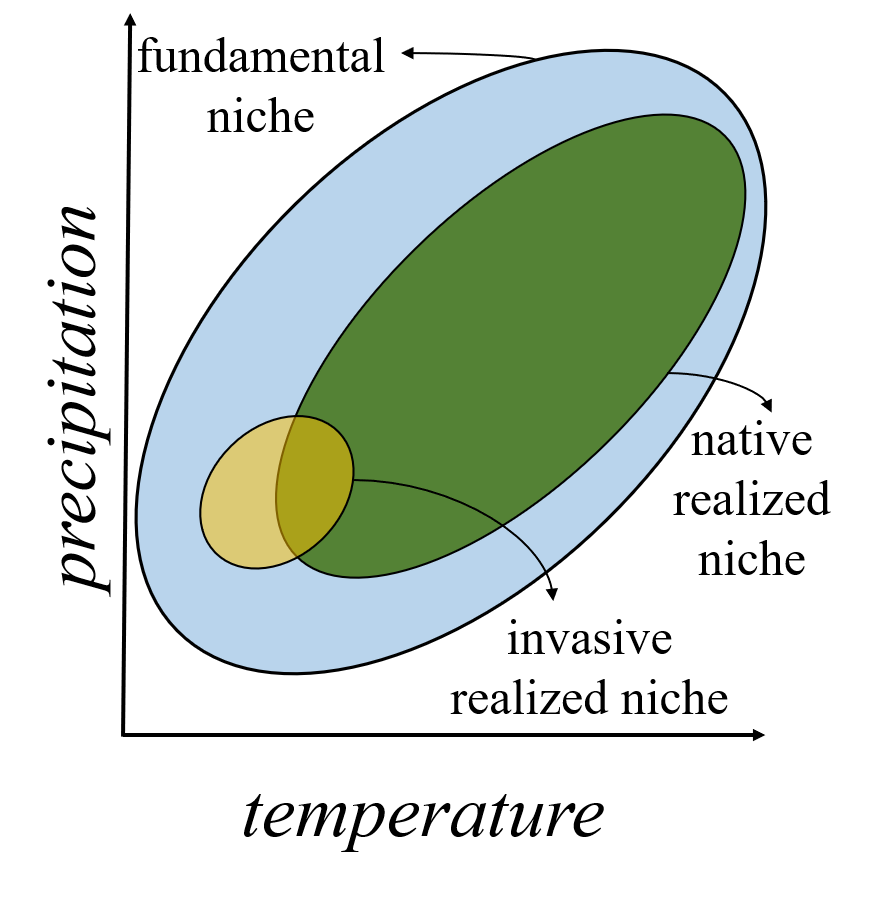
Invsasion risk assessments
Biological invasions rank among the top threats to biodiversity and ecosystem services, and changes in climate and land use may further compound invasions risks. We therefore study how global trade networks influence the set of species that get introduced to regions, how climate, habitat and land-use act as filter for invasion success, and which species that are most likely to emerge as high-impact invaders.
We integrate different distribution modeling and machine learning techniques to estimate habitat suitability, and combine this with information on landscape connectivity and species’ dispersal behavior to inform population dynamics models testing different scenarios of invasion success and spread.
We apply this knowledge to aid conservation planning, for example in the TrIAS project where we devised a data-driven open-science framework for predicting the combined effects of climate and land-use changes on species’ invasion risk across Belgium.
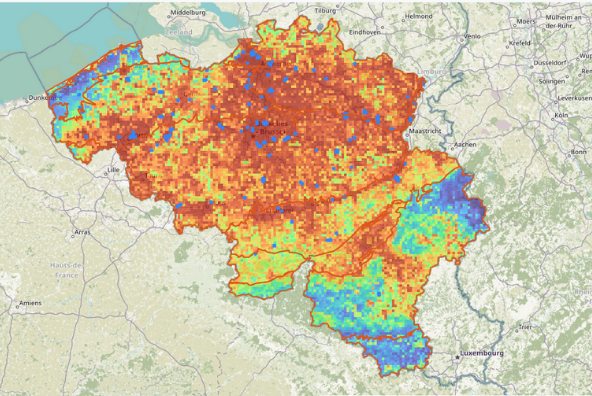
Urbanization
Urbanization is one of the most disruptive forms of land use, severely impacting on biodiversity and ecosystem services. Given the continuing expansion of cities and the ongoing concentration of human populations in urbanized areas, understanding how biodiversity can be maintained in anthropogenic landscapes is paramount both for biodiversity conservation as well as for promoting healthy livelihoods for people.
Our research focuses on investigating at which spatial scales anthropogenic selection pressures operate most strongly on urban biodiversity, using a suite of phenotypic stress markers (i.e. body condition, hormone levels, fluctuating asymmetry,…) and fitness proxies (such as breeding success) to quantify how individuals and populations respond to urbanization.
We couple insights derived from this work with our expertise in spatial modelling of habitat suitability to predict the effects of urbanization scenarios on species, thereby helping to inform urban planning scenarios to maximize urban biodiversity.

Habitat degradation and fragmentation
Habitat degradation and fragmentation are among the main direct drivers of biodiversity loss worldwide. Using both temperate and tropical systems, we study how these global change drivers impact on the ecology, demography and behavior of animals, and how they affect population persistence and extinction risks.
Our tropical research focuses on assessing how community composition, structure and species richness vary across human-modified landscapes, with a view of formulating management recommendations for establishing resilient ecological networks. In temperate areas, we study how changes in food web structure resulting from degradation and fragmentation affect ecosystem functions such as pest control and disease dynamics. Combining field observations with lab experiments, we assess how environmentally induced stress affects host-pathogen dynamics in a broad range of vertebrate species.
Our main aim here is to contribute to a better understanding of the causal links between environmental change, individual physiological condition and disease susceptibility and outbreaks.
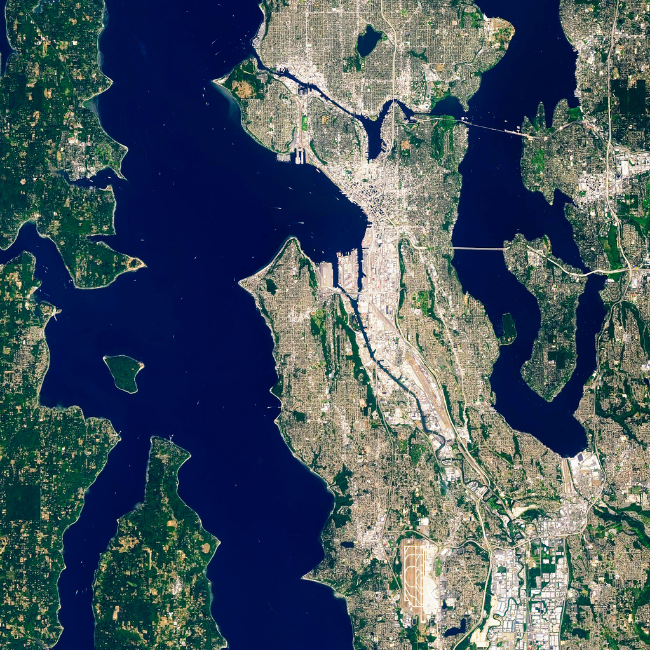
Invasive species distributions
Invasive species, climate change, and land use change all belong to the top-five major threats to biodiversity worldwide, yet very few studies consider interactive effects between these global change drivers. This is problematic, as neglecting land-cover change can lead to overestimating risk when modeled climate suitability is not matched by availability of suitable habitat, or underestimating risk when climate change and land-cover change interact positively on the suitability for invasion.
We apply macroecological modeling techniques to jointly consider climate and land use change impacts on species’ invasion risks. For characterizing current and future land uses we have developed expertise in remote sensing data such as Copernicus landcover data and Earth System Model estimates of the combined effects of land use and fossil fuel emissions on the global carbon–climate system.
By developing accurate tools to forecast the spread of invasive species we generate insights of relevance to international and regional policy and management of invasive species.
